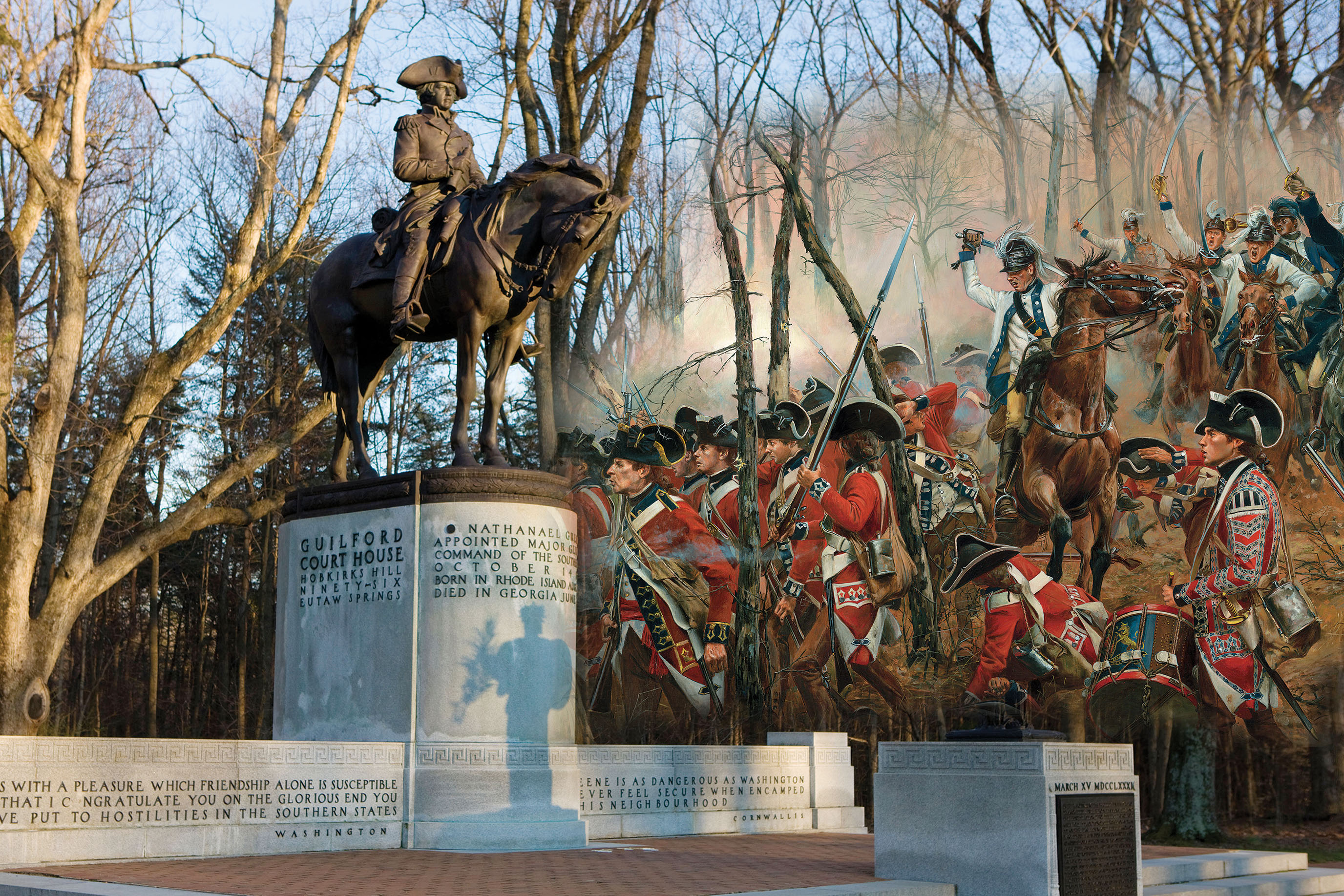On March 15, 1781, American and British forces fought the largest battle in the Southern theater of the American Revolutionary War at Guilford Courthouse, N.C. While the British held the field at day’s end, they’d suffered irreplaceable casualties that contributed to their ultimate defeat at Yorktown, Va., that October.
Patriot field commander Maj. Gen. Nathanael Greene, a trusted friend and subordinate of commander in chief George Washington, referred to the battle as “long, obstinate and bloody.” But he’d paved the way for American independence.
When France formally allied with the rebelling colonies in 1778, Britain was compelled to defend vital trade and strategic sites in the Mediterranean, the Caribbean and the Indian Ocean and thus had fewer resources to commit to North America. Its resulting “Southern strategy” aimed to reinforce Regular troops with Loyalist recruits and reclaim the profitable plantation colonies.
If successful, the growing army would advance from the Carolinas into Virginia, then continue northward to extinguish the rebellion. British commander in chief Maj. Gen. Sir Henry Clinton directed the capture of Savannah, Ga., in December 1778 and personally took Charleston, S.C., in May 1780, capturing most of its 5,000-plus American defenders under Maj. Gen. Benjamin Lincoln.
Returning to his base in New York City, Clinton left command of British forces in the South to Lt. Gen. Charles Cornwallis, who garrisoned Georgia and South Carolina. While Lord Cornwallis won a crushing victory at the Battle of Camden in August 1780, disease and guerrilla attacks on British supply lines and outposts stymied progress toward the Southern strategy.
In October 1780 Patriot militia destroyed a Loyalist force at Kings Mountain, further hindering British recruiting efforts and leaving Cornwallis vulnerable to threats from the backcountry. That same month Greene was appointed commander of American forces in the South. Against convention he split his forces, sending a detachment under Brig. Gen. Daniel Morgan farther west into the Carolina backcountry.
In January 1781 Morgan won a stunning victory at Cowpens, S.C., over a largely Loyalist force spearheaded by the veteran British Legion under the fearsome Lt. Col. Banastre Tarleton.
In its aftermath Cornwallis faced increasing difficulties with supply and reinforcement. On March 15 he finally caught up to Greene’s strategically retreating army at Guilford Courthouse, N.C., within present-day Greensboro. Greene deployed his 4,500 men in three lines.
The first and second lines, respectively, comprised militia from North Carolina and Virginia and were intended to inhibit the British advance until the final line of Continental Regulars could deliver the decisive blow. Advancing up either side of the Great Salisbury Road, Cornwallis’ 1,900 men attacked at 1:30 p.m.
As instructed, the North Carolinians fired twice before retreating. The Virginia militia put up a stiffer resistance. Spearheaded by the Foot Guards and Highlanders, the British ranks broke through but then lost cohesion as they approached the line of Continental troops.
The Virginia and Maryland Regulars and Lt. Col. William Washington’s 3rd Continental Light Dragoons initially held off the British infantry. But the arrival of Cornwallis’ reserves coupled with devastating British artillery fire, which raked men on both sides, prompted Greene to prudently withdraw.
It was a Pyrrhic victory for Cornwallis. With some 100 men killed, 400 wounded and 25 missing, he’d lost nearly a quarter of his army. Parliament was not fooled when the general reported his “victory,” Whig Party leader Charles James Fox quipped, “Another such victory would ruin the British army!” Greene’s casualties were hardly light—some 85 killed, 275 wounded and upward of 900 missing. But the Americans could replenish their losses. The British could not.
Cornwallis withdrew to Wilmington to refit. Meanwhile, Greene cleared South Carolina of remaining British troops. Cornwallis then shifted operations to Virginia, ultimately leading to his surrender at Yorktown and war’s end.
In 1882 Judge David Schenck secured the battlefield for future donation as a memorial site, and his bequest forms the heart of the present-day 220-acre Guilford Courthouse National Military Park, established in 1917. MH
This article appeared in the May 2021 issue of Military History magazine. For more stories, subscribe here and visit us on Facebook:






